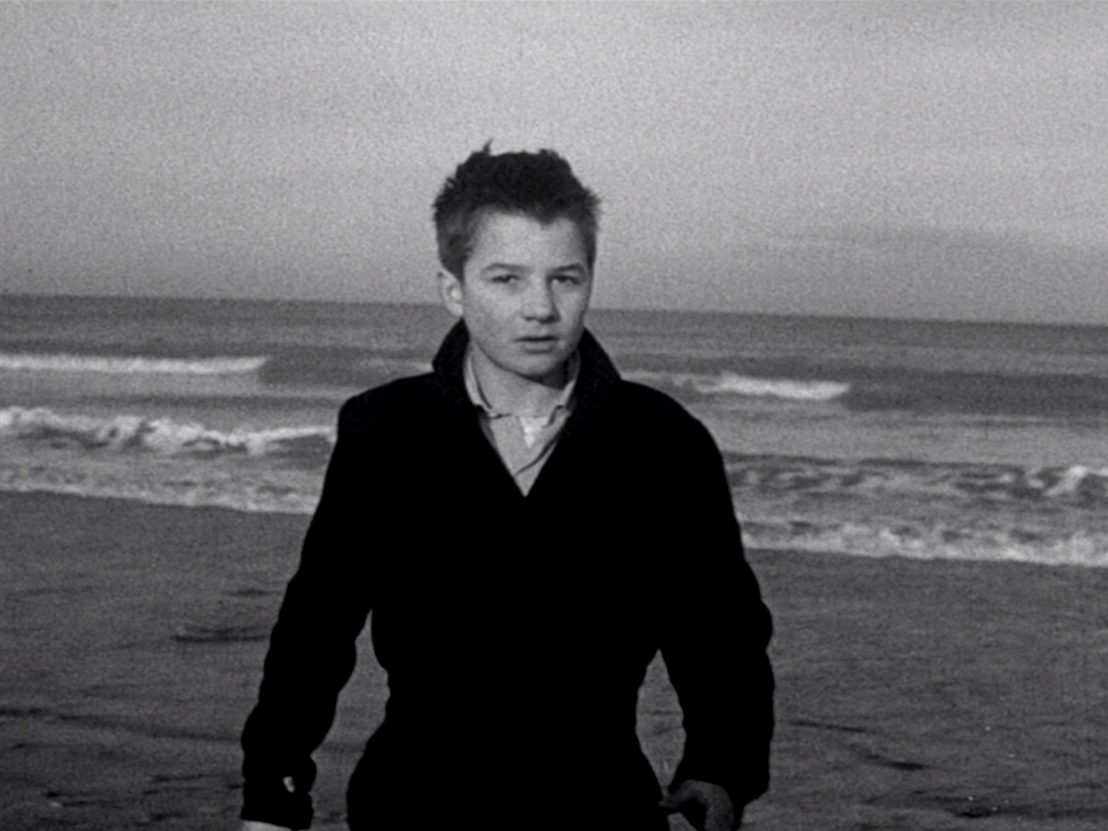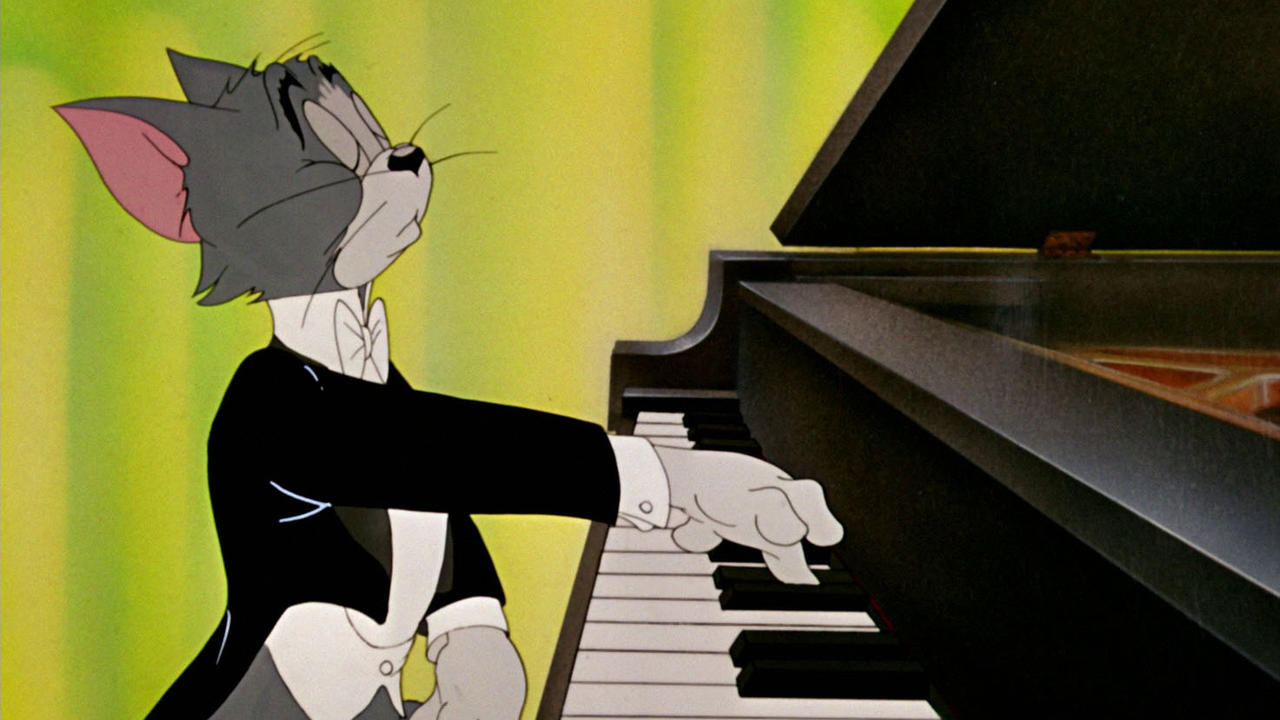I had been drafting a piece on the old prison work song “Ain’t No More Cane on the Brazos” — and then I discovered that someone already wrote it. The author, a guy named Dave Byrne who died in 2015, seems to have published just a handful of essays — really fine ones.
Fleet Street, December 2019

I love the genre of “alternative movie posters,” and Michael Krasnopolski’s are great.

I wrote a denunciation of apps.
against apps, for wander lines
In 1980, a curiously polymathic Jesuit priest named Michel de Certeau (1925–86) published a provocative book called, in English translation, The Practice of Everyday Life. (The original and more evocative French title is L’invention du quotidien Vol. 1: Arts de faire.) In the book’s introduction he lays out a simple and yet wonderfully generative opposition between strategy and tactics; and that distinction will be key to what follows.
The terms are of course borrowed from warfare: strategy (the term derives from the Greek strategos, “army leader”) concerns the overall goals and general plans of a military campaign. It is the view from 30,000 feet. But when we speak of tactics we are viewing the situation from ground level: military tactics are the specific ways and means by which the overall strategic goals are pursued. Only strategoi formulate strategy, and they may have a good deal to say about tactics as well, but because conditions on the battlefield may be unexpected or volatile, subordinate leaders will be largely responsible for tactical decisions.
De Certeau looked around him and saw a world determined by the strategoi of multinational corporations, national governments, and what the Marxist theorist Louis Althusser called “ideological state apparatuses.” (Depending on the country, examples of such apparatuses might be educational and health-care systems – not necessarily directly controlled by the government, but regulated and overseen in ways that serve governmental purposes.) These Powers, as St. Paul might have named them, call the shots. In de Certeau’s terms, they identify an “environment” which they stand outside of and manipulate; they determine what within that environment is “proper” – and propre is a key word for de Certeau. What are the proper activities in environment X? What is the proper environment for activity X? The Powers organize and channel the energies of ordinary people into the proper, and do so according to their strategic purposes.
So what is left for ordinary people to do? Well, they can become mere drones, acting wholly and unthinkingly within the channels set by those Powers. But, de Certeau believed, few human beings are drones. Even in dire circumstances people can prove amazingly resilient and creative:
The ambiguity that subverted from within the Spanish colonizers’ “success” in imposing their own culture on the indigenous Indians is well known. Submissive, and even consenting to their subjection, the Indians nevertheless often made of the rituals, representations, and laws imposed on them something quite different from what their conquerors had in mind; they subverted them not by rejecting or altering them, but by using them with respect to ends and references foreign to the system they had no choice but to accept.
For example, these Indians could not decline to become Christians; but they could interpret the Christianity imposed on them in ways that harmonized with their traditional beliefs and practices – as long as they did not do so in open defiance of the boundaries of the “proper.” They could not defy the powers; but they could “make of” what the Powers imposed on them something other than what the Powers intended. This, de Certeau says, is tactical thinking, tactical practice.
In our own context, then, by employing similar tactics those who are designated as mere “consumers” can become “unrecognized producers, poets of their own acts, silent discoverers of their own paths in the jungle of functionalist rationality.” In describing how this works de Certeau employs a fascinating analogy, which will take some time to explain. He invokes the work of the maverick educator Fernand Deligny (1913–96), an extraordinary figure so completely neglected that, as I write, he doesn’t even have a Wikipedia page. But in addition to providing a key metaphor to de Certeau, Deligny provides also a model for the practices I think essential our moment. Think of what follows not as a digression from my presentation of de Certeau, but of de Certeau’s work as a way into the “Arachnean” (spider-like) thought of Deligny.
•
Deligny and his colleagues, living and working in the Cévennes Mountains of southern France, intentionally separated from the institutional structures (the strategic structures) of French culture, tried to find new and more humane ways of supporting autistic children – especially those who did not speak, who were hors de parole (outside of speech). Deligny treated this silence as a choice to be respected rather than a disability to be overcome, and paid close attention to what such children did instead of speaking.
Leon Hilton, in a fascinating essay, explains that Deligny and his colleagues
began to follow their autistic counterparts as they made their way through the Cévennes’s rocky terrain, making rudimentary line drawings to indicate their direction of movement across the rural encampment and into surrounding wilderness.
The tracings soon became a central aspect of the group’s activities, and the maps grew steadily more detailed and elaborate. They developed visual systems for designating the various sounds and gestures encountered along their pathways, and started to use transparent wax paper to trace the children’s daily routes. No attempt was made to interfere with their movements, or to explain or interpret them. The focus remained on the process of tracing itself.

Deligny called these drawings lignes d’erre – erre not in the sense of “erroneous” but in the sense of the “knight-errant,” the wandering knight without fixed abode. Lignes d’erre are unstable because in motion, perhaps like a pilgrim’s path, which may have more order than it initially appears to. Wander lines, which precede the regularized and disciplined forms of letters. Hilton: “Yet distinct patterns began to emerge: certain trajectories tended to be repeated from one day to the next, and Deligny noted that some of the wandering lines seem to correspond to the conduits of underground waterways.” The children were wordlessly making their way along the paths of life, and and the adults let them do it. Or: rather than imposing a strategy on the children, they allowed the natural world to form the environment, and this empowered the children to become more than mere consumers, mere drones in the “proper” channels. The children became, to return to de Certeau’s language, “poets of their own acts, silent discoverers of their own paths in the jungle of functionalist rationality,” and though hors de parole they became also documenters of their wayfaring. If I thought it possible to rehabilitate a greatly-abused word, I’d say that they were networking.
One of the most famous moments in all of movies comes at the end of François Truffaut’s first feature, The Four Hundred Blows (1959). Antoine Doinel, a Parisian boy who has repeatedly been in trouble – with his mother, with his teachers, with the law – is sent to an institution for troubled youth, where he is subjected to a series of interviews with a psychologist who wants to excavate the causes of his unhappiness. But one day, when playing with some of the other children, Antoine crawls under a fence and makes his way, running, running, to something he had always wanted to see: the ocean. Truffaut freezes the camera on Antoine as he gazes at the wandering, drifting waves of the sea. As Leon Hilton explains, Truffuat worked out the concluding scene of the movie with the help of Fernand Deligny.

•
What is the value of Deligny’s work to de Certeau? The “wander lines” of the autistic children exemplify
‘indirect’ or ‘errant’ trajectories obeying their own logic. In the technocratically constructed, written, and functionalized space in which the consumers move about, their trajectories form unforeseeable sentences, partly unreadable paths across a space.
The autistic children Deligny worked with are admirable improvisers: pens and paper are for writing words, they serve the purpose of bringing people “inside written language,” but these children made something else of the tools, adapted the instruments to their own needs and desires. (This is what in my “Filth Therapy” essay, following yet another French thinker, the anthropologist Claude Levi-Strauss, I called bricolage: making do, employing what is to-hand, inventing new purposes for old materials.)
It is vital to de Certau’s argument to insist how commonplace such activity is – we fail to see how much we are like those autistic children in the mountains of France, how we too are tacticians:
Many everyday practices (talking, reading, moving about, shopping, cooking, etc.) are tactical in character. And so are, more generally, many “ways of operating”: victories of the “weak” over the “strong” (whether the strength be that of powerful people or the violence of things or of an imposed order, etc.), clever tricks, knowing how to get away with things, “hunter’s cunning,” maneuvers, polymorphic simulations, joyful discoveries, poetic as well as warlike.
But what de Certau, writing nearly fifty years ago, did not foresee is the rise of a Technopoly, an ever-extending regime that unites the old forces of state and corporation into an unprecedentedly extensive endeavor with a Grand Strategy – a strategy I have called metaphysical capitalism. (See the relevant tag to this post.) Technopoly tells us that we own ourselves, and that everything we need to fulfill our own (unchallengeable) desires is available for sale in the marketplace. But of course this is a system that only works if what we desire can in fact be purchased; and since that cannot in advance be guaranteed, the initial imperative of Technopoly is to train our desires, to channel them towards what the system already has for sale.
And the greatest instruments ever devised for such channeling are our internet-connected devices, especially when we connect to the internet through apps. The reason? Because while pens and paper can be used in extraordinarily varied and unpredictable ways, apps can’t: the ways in which we can interact with them are determined with great specificity and no deviation from the designed user-interface paradigm is permitted. You can use a pen to write a poem in elaborate cursive, sketch a tree, play Hangman, or, in moments of desperation, scratch a mosquito bite or skewer a chunk of watermelon. (I am describing, not recommending.) With TikTok, you can … make TikToks. The app is so far the ultimate extension of what Albert Borgmann called the device paradigm.
In short: in relation to the Grand Strategy of Technopoly, the essential purpose of apps is to eliminate the sphere of the tactical. It is to make the kind of improvisation I celebrated in my essay on Albert Murray impossible. It is to transform us all into drones, and then to make us like it – to make us (a) accept a universal strategic imperative as desirable, and (b) promise that our lines never shall wander.
The Cat Concerto (1947). David Thomson: “The great American film about the highest artistic dreams leading you to madness.”

I wrote an essay (now unpaywalled!) on the kinds of resistance that create the possibility of great art — and also the kinds of resistance that impede artistic imagination and innovation. Maybe the most difficult and complex subject I have ever written about.
Finally got Angus to sit (for an instant) for his portrait.

Tom Eastman: “I’m old enough to remember when the Internet wasn’t a group of five websites, each consisting of screenshots of text from the other four.”
This case for sabbaticals is quite good – and also a reminder to me that, while I’ve had a number of sabbaticals, I have never had a rest. A break from the routine, yes, but not a rest. I wonder if at this point I am even able to rest?
Well, I’m back.

St. John Chrysostom: “Has [Eutropius] inflicted great wrongs and insults on you? I will not deny it. Yet this is the season not for judgment but for mercy; not for requiring an account, but for showing loving-kindness; not for investigating claims but for conceding them; not for verdicts and vengeance, but for mercy and favor. Let no one then be irritated or vexed, but let us rather beseech the merciful God to grant him a respite from death, and to rescue him from this impending destruction, so that he may put off his transgression, and let us unite to approach the merciful emperor, beseeching him for the sake of the church, for the sake of the altar, to concede the life of one man. … God says, ‘I will have mercy and not sacrifice,’ and throughout the scriptures you find him always enquiring after this, and declaring it to be the means of release from sin.”
Re: my Asteroid City post: I’m gonna write a long essay one day about how Terrence Malick and Anderson are matter and anti-matter: two Texas Episcopalians with diametrically opposing ideas of what movies can and should do. Earnestness vs. irony, fluidity vs. geometry, directness vs. endless indirection, etc.

Abandoned reading: Bob Dylan: The Essential Interviews by Jonathan Cott. Dylan, the greatest singer-songwriter ever, is a terrible interviewee because … well, to put it bluntly, because he lies all the time. You can’t trust anything he says. 📚
A Visit to Balzac’s House: “In addition to its garden, the Maison de Balzac boasts a large lawn of natural grass, unevenly tufted. No one seemed to be taking advantage of it, and eventually I noticed a series of pale green signs posted here and there at foot level, on each of which was written, in a looping white script, ‘Pelouse au repos.’ I googled it, and learned that the lawn was resting.”
I wrote a pretty long post about Asteroid City — but it has so many spoilers that you probably shouldn’t read it unless (a) you’ve seen the movie or (b) plan never to see the movie.
what the bird said

Many spoilers follow.
Wes Anderson’s Asteroid City begins with a framing story: We seem to be watching a television show from the 1950s, and in that show our Host — something like the Stage Manager from Our Town — presents to us a new play called Asteroid City. From time to time we return to this framing story, in which we learn (in nonconsecutive order) how a playwright named Conrad Earp came up with the idea for his play, how the play was cast, how changes were made to it, how its director came to live backstage amid the props, and so on. We’re even told that the playwright died in an accident.

The play itself is presented to us in full color, featuring a slightly more-pastel-than-usual version of the typical Wes Anderson color palette. Though, as noted above, there is a backstage, and at one point we even see an actor leave the scene he’s playing to go backstage and ask the director whether he’s playing his part properly, the moment we’re placed within the world of the play we’re given a 360º camera rotation — in 90º increments: quarter-turn, stop; quarter-turn, stop; etc. — to demonstrate that the play’s world completely surrounds us, that for us there should not be, cannot be, any “backstage.”
Here’s what happens. It’s 1955. Many people converge on a meteor crater in the desert somewhere near the convergence of California, Arizona, and Nevada. Some teenage student scientists, along with their parents, have come to receive awards (from a general in the U.S. Army) for their inventions; a busload of younger students are there on a field trip; a country-and-western band get stuck when they miss their bus out of town. (Or “town” — the population is 87.) In the middle of the award ceremony a spaceship arrives and hovers over the crater; an alien descends from the ship and takes a basketball-sized chunk of the meteorite; the government confines everyone to the site for a week and forbids communication with the outside world. Tentative romantic relationships begin. One of the teenage scientists manages to get word out to his high-school newspaper; with the information embargo broken, the government decides to let everyone go home; before everyone can leave the spaceship returns to drop off the meteorite; the general re-imposes lockdown; chaotic resistance ensues; the actor has his motivational crisis and goes backstage; the lockdown is lifted; everyone goes home. So it’s a comedy, basically.
Or not. Many of Wes Anderson’s movies are tonally awkward, and this one more than most. The awkwardness here arises from one major plot point that I have omitted. That actor who has a crisis about his motivations? He’s playing a photojournalist named Augie Steenbeck … hang on. Let’s pause a moment to pursue clarity. You’ll see a lot of commentary on this movie saying that Jason Schwartzman plays Augie Steenbeck. This is not true. In the movie Asteroid City Jason Schwartzman portrays an actor named Jones Hall who, in the play Asteroid City, portrays a photojournalist named Augie Steenbeck who visits a town called Asteroid City. All clear now? Okay.
Well … perhaps I should add that, depending on how you understand this TV-show framing, it’s possible that Jason Schwartzman is playing an unnamed actor who, for the purposes of television, is playing the stage actor Jones Hall, who plays the photojournalist Augie Steenbeck. But let’s pretend I didn’t say that.

Augie Steenbeck has come to Asteroid City because his son Woodrow is one of the teenage scientists to be honored. He brings Woodrow and also his three younger daughters. He has a big problem, though: his wife, the mother of his four children, has been dead for three weeks and he hasn’t told them. Now, under pressure from his father-in-law, whom he talks to on the phone, he decides to tell them — and does, in the flat tones that all of Wes Anderson’s characters typically use, while holding her ashes in a Tupperware container.

Jones Hall, the actor playing Augie, doesn’t understand Augie. He’s doesn’t know what’s going on his Augie’s head — that emotionless flatness of tone hides Augie from the man performing him. He’s also confused about some of Augie’s actions, especially one odd thing: after he convinces Conrad Earp to cast him as Augie, he asks “Why does Augie burn his hand on the Quickie Griddle?” (Quickie Griddle pictured above, at the bottom of the frame. Augie is just about to touch it.) Augie has toasted a sandwich, and when talking to the woman he may be falling for, he suddenly places his palm on the hot griddle. But Conrad Earp doesn’t know why Augie does that: “He just sort of did it while I was typing.” Hall’s ongoing puzzlement about Augie then takes him backstage to talk to the director. “I still don’t understand the play,” he says. “Doesn’t matter,” the director replies. “Just keep telling the story.”
Hall is not satisfied. The big chaotic scene of resistance to the general’s diktat is still going on, and he doesn’t think he’ll be missed if he stays away a few moments longer. “I need some fresh air,” he says, to which the director replies, “You won’t find any.” But Augie goes out on the fire escape anyway and lights a cigarette.
•
Think of a movie like The Grand Budapest Hotel. How might one defend treating a subject like the Bloodlands of the mid-twentieth century in this peculiar way, with its chocolate-box colors, farcical action, exaggerated and anti-naturalistic acting styles? Asteroid City is, I think, Wes Anderson’s attempt to answer that question. That’s what I’m slowly getting around to explaining.
•

We primarily see Augie interacting with Midge, the woman he may be falling for, as they look at each other across the gap that separates his tiny motel cottage from hers. Each of them is framed for the other; they speak but are separated by the walls. And now, when Jones Hall goes out onto the fire escape, he finds himself immediately opposite another fire escape, one attached to another theater, and he is looking at another actor, another person who has left the theatrical space for some fresh air and a smoke — and it’s a person he recognizes. “Ah,” he says, it’s you, the wife who played my actress.” The inadvertent switch of nouns is of course telling.
In some earlier version of the play Asteroid City Conrad Earp had written a scene between Augie and his wife, a scene in which she advises him how to navigate his life without her. Jones Hall has forgotten the scene, but “the wife who played his actress” remembers it word for word, and quietly recites it to him as they look at each other across their respective fire-escape platforms. Jones Hall has traveled from the brightly-colored environment of Asteroid City to the disorderly backstage collection of props and makeup to what is for him the “real world” — the world of “fresh air.” Was the director wrong to tell him he wouldn’t find any?
What’s the opposite of “fresh”? One opposite is artificial, and it’s noteworthy that the actress who recites her discarded lines, her discarded part, is dressed for a period drama, wearing the rococo costume of a seventeenth-century aristocrat. Jones Hall learns something he needs to know about his character not through inhaling fresh air, not through re-entering the “real world,” but through a chance encounter with words of explanation, words rejected because they were too explicit, because they said too much — and delivered to him by a Goddess of Contrivance, the very embodiment of artifice.

Again, this is all part of the frame story, and the final part part of the frame story involves a flashback to a visit paid by Conrad Earp to a place very like the Actors Studio, an institution created in the very period in which our story is set. There Conrad Earp and the movie’s equivalent of Lee Strasberg encourage the actors gathered there — several of whom eventually make up the main body of the cast of the play Asteroid City — to “workshop” the dialogue of the play. Some of them enter, or feign to enter, a kind of trance state, in the midst of which the camera closes in on Jones Hall, who looks directly at us and says a single sentence, a sentence then taken up and chanted by the whole room: “You can’t wake up if you don’t fall asleep.”
You can’t wake up if you don’t fall asleep. I think this is as close as Wes Anderson has ever come to explaining and defending his very peculiar style of filmmaking. What he’s telling us is that the most vital and the most painful things in life cannot be confronted directly, explicitly, artlessly. There must be masks — contrivances, artifice — that distract us, lull us, distract our agitated minds. As Touchstone says, “The truest poetry is the most feigning.” Tragic experience, to be properly worked through, must wear the mask of comedy. And perhaps for the deepest griefs a single mask is insufficient; you may need several. So here we see layer after layer being peeled away, but no matter how many layers we remove we just find more artifice.
And I think this is Anderson saying that he wants to make art about some of the most profound of human experiences — but doesn’t know how to make it explicitly and directly about those experiences. Or doesn’t want to. Or doesn’t believe in doing so. In some ways, then, you can see this movie as a kind of a commentary on his other films, above all, I think, The Grand Budapest Hotel. If you want to know why Wes Anderson takes such a mannered and apparently frivolous attitude towards matters of the greatest depth and significance, I think he’s explaining that in Asteroid City. He’s obeying Emily Dickinson’s instruction to “Tell the truth but tell it slant.” And he’s doing that because, as the bird says, “human kind / Cannot bear very much reality.”

Oh, is that what he embodies?

